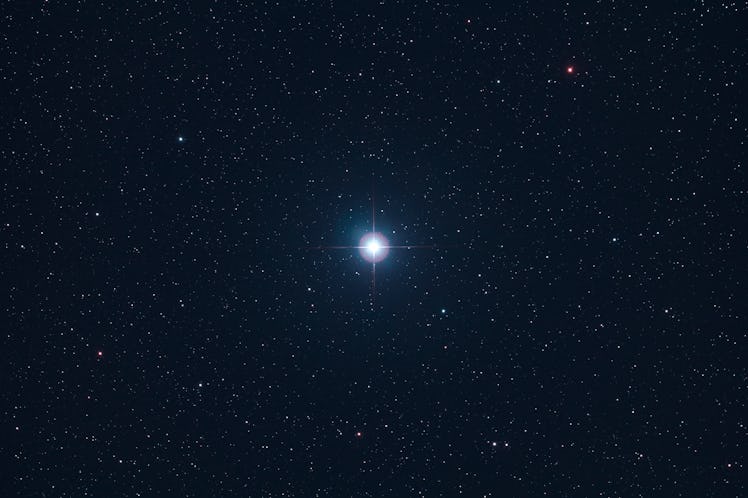The Incredibly Bright Vega Star Is Visible To The Naked Eye All May
One of the brightest stars in our sky shines spectacularly bright in May so much that even moonlight can’t dim its shine.

There is so much to look forward to when the seasons change from spring to summer, and for stargazers, the month of May brings an extra dazzle. One of the brightest stars in our sky shines spectacularly bright in May, so much that even moonlight can’t dim its glow. Here’s what you need to know about Vega — including where to see it shining in the sky.
What is the Vega star?
According to EarthSky.org, Vega is the fifth brightest star in our sky, and during the month of May, it will be its easiest to spot thanks to its bluish hue.
The star is only 25 light-years from Earth, Space.com explains, which is why we can see it shine as brightly in our sky as we do. The star is part of the Lyra constellation, and it forms an asterism (aka a pattern) with two other stars, Altair and Deneb, forming the Summer Triangle.
“The star is only about 450 million years old, which makes it a youngster compared to our own solar system (which is 4.6 billion years old),” Space.com notes. “Studies of Vega help astronomers learn more about solar systems that are in the early stages of their formation.”
Tips to spot Vega with the kids
One of the coolest things about Vega is that because it’s so bright, thanks to how close it is to Earth, some places can spot the star at any time of the year.
Space.com explains that for those who live in “midnorthern latitudes such as New York or Madrid, Vega goes below the horizon for only about seven hours a day,” which means it’s visible on nearly every night of the year — and in May, it’s so bright you can see it with the naked eye — even through bright moonlight.
“Like all stars, Vega rises some four minutes earlier each day as Earth moves around the sun,” per EarthSky.org. “So Vega will adorn our evening sky throughout the summer and fall.”
If you want to take the kids out to look at the star, since it is so bright, you’ll be able to spot it anytime after the sun goes down. To find it, all you need to do is look northeast during the evening hours, and that bright, blue dot in the sky is Vega.
This article was originally published on